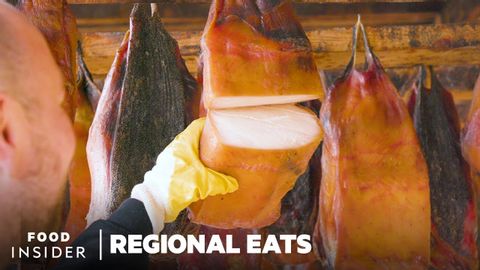アイスランドのサメの発酵食品はどうやって作られているのか? (How Icelandic Fermented Shark Is Made | Regional Eats)
林宜悉 が 2020 年 11 月 12 日 に投稿  この条件に一致する単語はありません
この条件に一致する単語はありませんUS /ˈprɑsˌɛs, ˈproˌsɛs/
・
UK /prə'ses/
- v.t.(コンピュータの)データを処理する;処理する;処理する;一連の工程を経る;加工する : 加工処理する;理解する
- n. (c./u.)手続き;一連の行為;方法;訴訟手続き;プロセス (コンピューター)
US /ˌrɛkəˈmɛnd/
・
UK /ˌrekə'mend/
エネルギーを使用
すべての単語を解除
発音・解説・フィルター機能を解除
